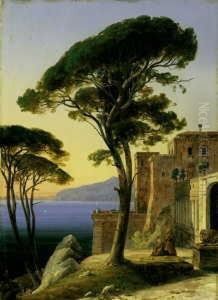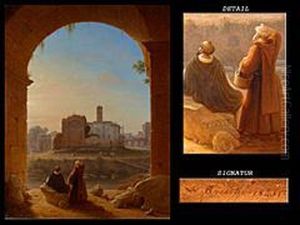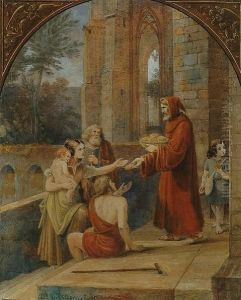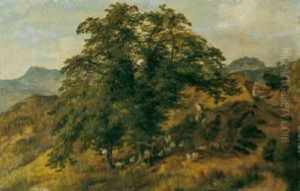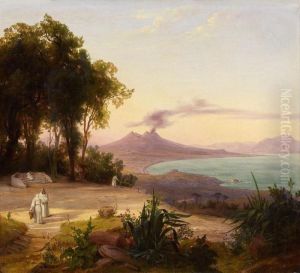August Wilhelm J. Ahlborn Paintings
August Wilhelm Julius Ahlborn was a German landscape painter born on October 9, 1796, in Hanover. He developed an affinity for art at an early age, and his talent was recognized and nurtured. Ahlborn initially studied at the Academy of Fine Arts in Berlin, where he was influenced by the works of Karl Friedrich Schinkel, a Prussian architect and painter who was known for his neoclassical and Romantic style.
Ahlborn's style was typical of the German Romantic movement, often characterized by a fascination with nature, an emphasis on emotion, and an interest in the sublime. His works frequently depicted natural landscapes imbued with a sense of tranquility and a meticulous attention to detail, reflecting his deep appreciation for the natural world.
In the 1820s, Ahlborn traveled extensively throughout Italy, a journey that had a profound impact on his artistic development. He was particularly enchanted by the Italian countryside and the ruins of ancient Rome. During his time in Italy, he produced a number of drawings and oil paintings that captured the Italian landscape's unique light and atmosphere.
After his return to Germany, Ahlborn continued to paint and exhibit his works, which received considerable acclaim. His paintings were often characterized by their serene beauty and the harmonious relationship between nature and the structures within it, such as bridges and buildings that blend seamlessly into their surroundings.
Ahlborn's work was also noted for its influence from the Nazarene movement, which sought to revive honesty and spirituality in Christian art. The movement was a reaction against the prevailing trends of academic art and the impact of industrialization on society.
Despite his success, Ahlborn's life was marked by personal challenges, and he struggled with financial difficulties. He died on September 15, 1857, in Rome, where he had spent the later part of his life. Today, Ahlborn's works can be found in various art collections and continue to be appreciated for their poetic representation of landscape and the Romantic spirit that they embody.
